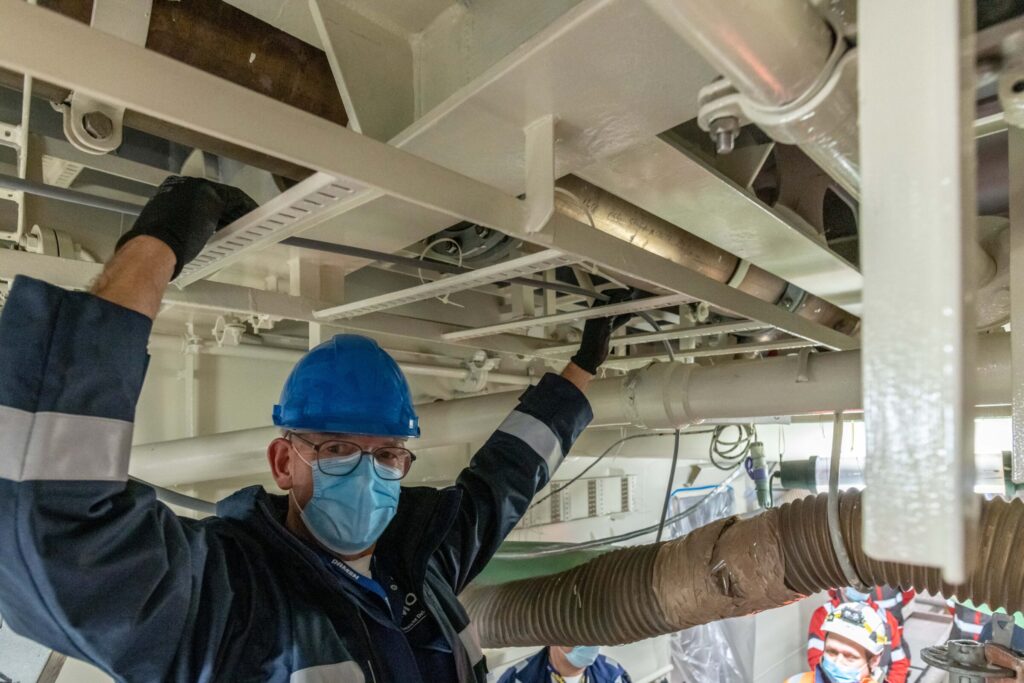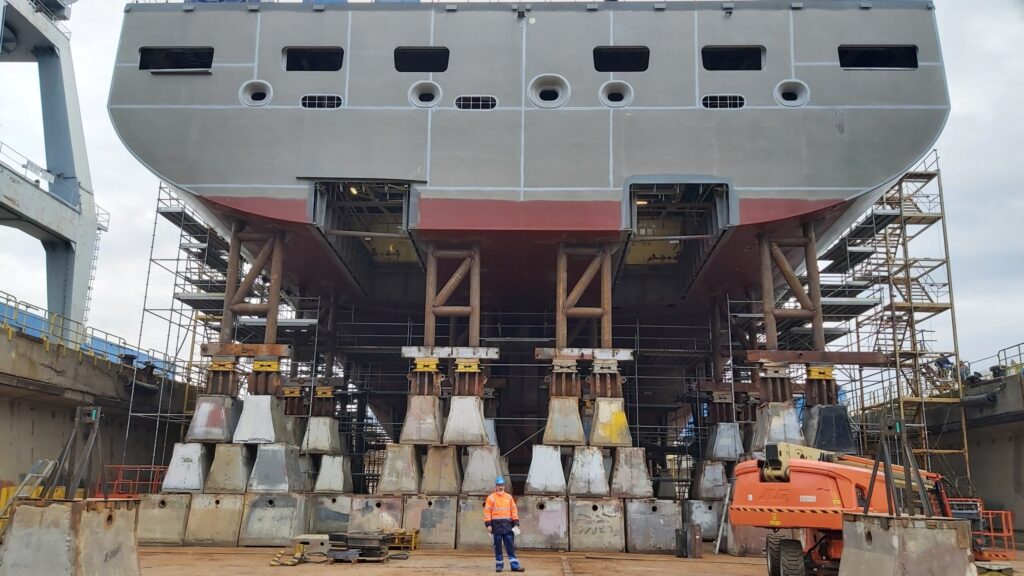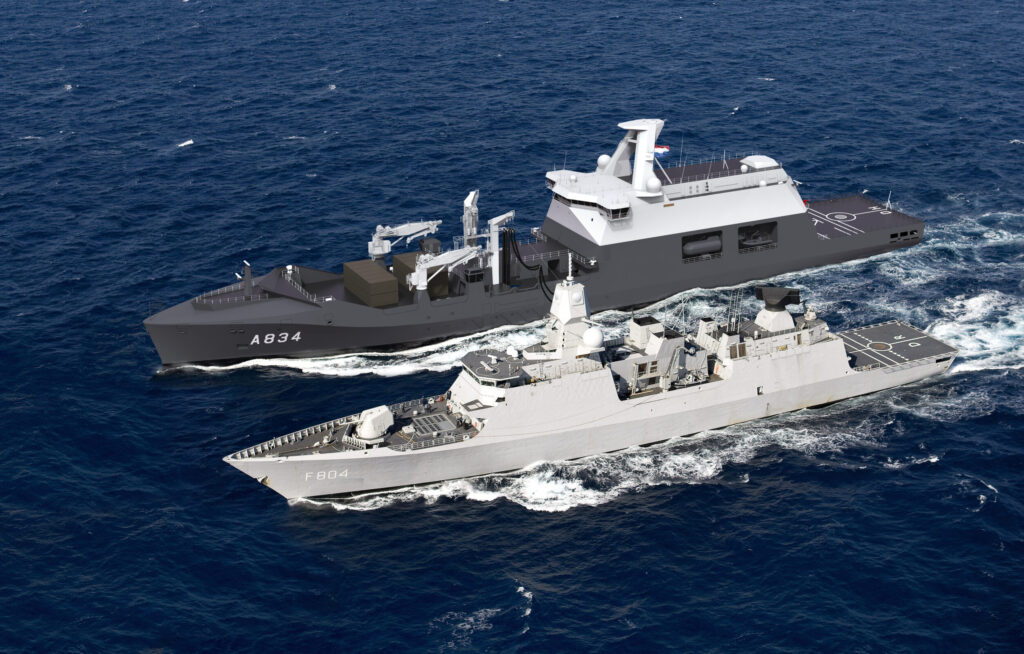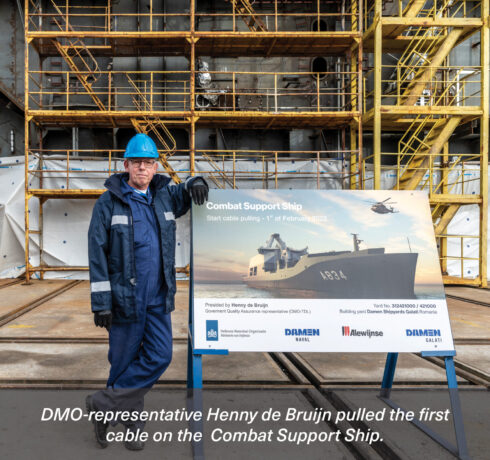On 1 February 2022, the construction of the Combat Support Ship (CSS) for the Royal Netherlands Navy entered an important new phase. Bang on schedule, work began on the hundreds of kilometres of cables that will be installed in the ship over the next eighteen months. The first cable was symbolically pulled by Henny de Bruijn, E Affairs representative in the quality assurance department of the Defence Materiel Organisation (DMO). “We have been working with Henny for over 20 years, but he is winding down towards retirement. That’s why we thought it would be nice to give him the honour of pulling the first cable and he really enjoyed it,” says CSS project director Arjan Risseeuw.
 Henny de Bruijn symbolically pulled the first cable.
Henny de Bruijn symbolically pulled the first cable.
Cable pulling is an important step in the construction process and also a time-consuming one. According to the planning, the job should be completed by mid-2023. “We are talking about some 600 kilometres of cable and that takes a lot of time,” explains Arjan. “Of course, it’s not just pulling the cables, but also connecting and commissioning them. It really is a critical path in the project. At the moment, the delivery times on cables are long, so we are working closely with our subcontractors: RH Marine, which is taking care of the engineering of the cables and has to send the right information in time, and Alewijnse, which is buying and installing the cables.”
 Project Director Arjan Risseeuw is dwarfed by one of the CSS' modules.
Project Director Arjan Risseeuw is dwarfed by one of the CSS' modules.
However, the cable pulling was not the only major project milestone at the beginning of 2022. Another important step was the Preliminary Design Review (PDR) of the ‘buoyancy aid’ that will allow the hull to be moved from the dry to the wet dock with an ‘even keel’. “During the PDR we went through the design thoroughly and we now know how many air pockets we need,” says Arjan. “We can also get started with the engineering and construction of the frame, so that we can use the buoyancy aid to move the ship in October.”
"It is fantastic that we are still on schedule and I find it very beautiful and impressive to see how all those separate blocks of steel will together form the hull of the ship.” Arjan Risseeuw
The design has to be carried out carefully, as the buoyancy aid must not cause any damage to the propellers, propeller shafts and rudders that will have been installed by then, or to the freshly painted hull. Arjan: “The buoyancy aid will be positioned around the propulsion train, but of course it has to fit carefully to the hull.”
And then there was a third milestone recently: the installation of the two main electric motors from General Electric in mid-February. The engines weigh more than 80,000 kg each and it was therefore quite a job. The four Wärtsilä W31 diesel generators were already installed at the end of last year. “In April, modules 2 and 3, which will by then have been joined to form one hull section, will be launched sideways. And in October, the then complete hull will be moved to the wet section of the dock,” Arjan concludes. “In short, it will be an exciting year for the CSS. It is fantastic that we are still on schedule and I find it very beautiful and impressive to see how all those separate blocks of steel will together form the hull of the ship.”
According to the project schedule, the Combat Support Ship will be delivered to the Defence Materiel Organisation in the summer of 2024.
 Construction of the CSS is progressing steadily and is right on schedule.
Construction of the CSS is progressing steadily and is right on schedule.

